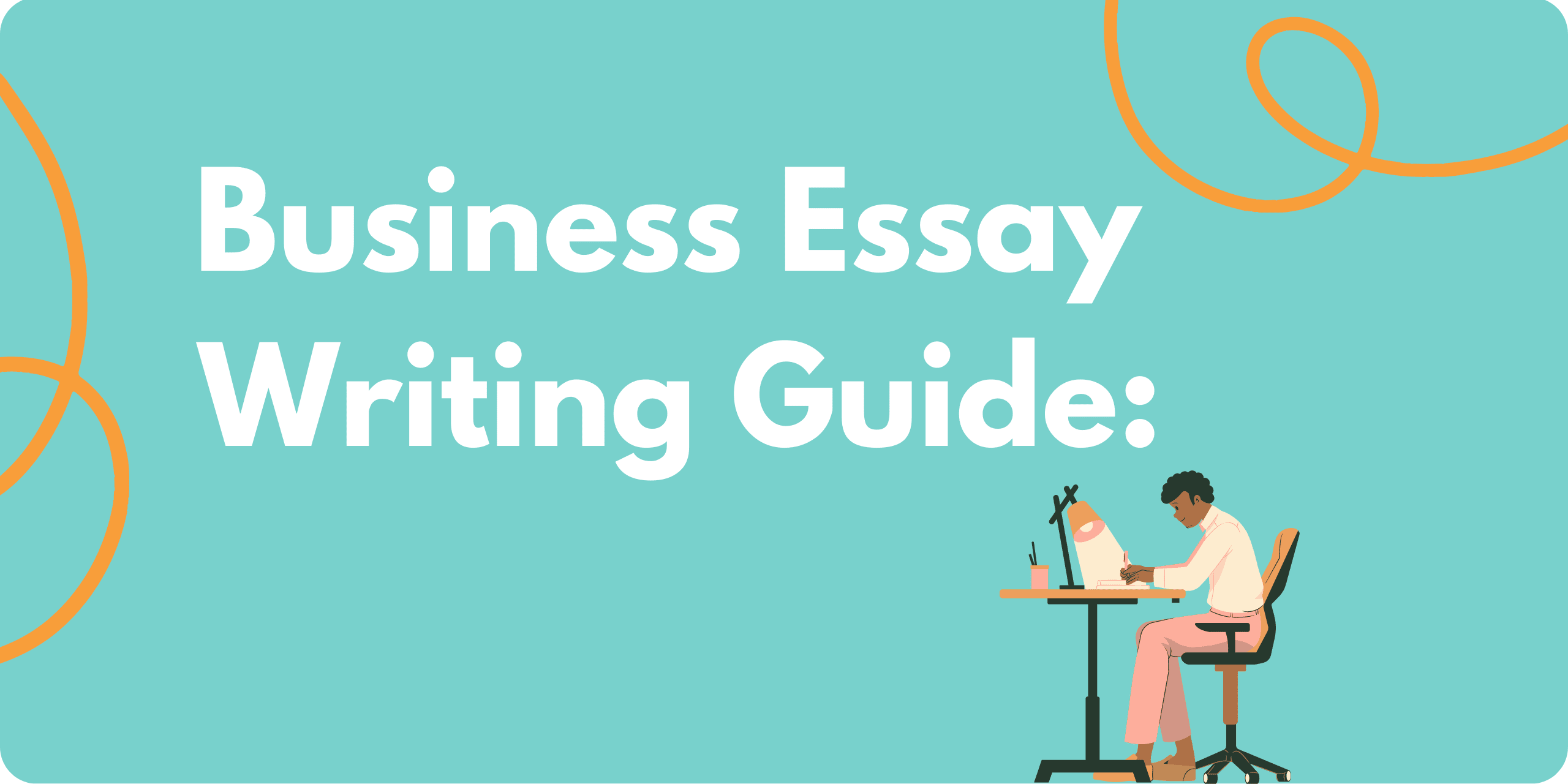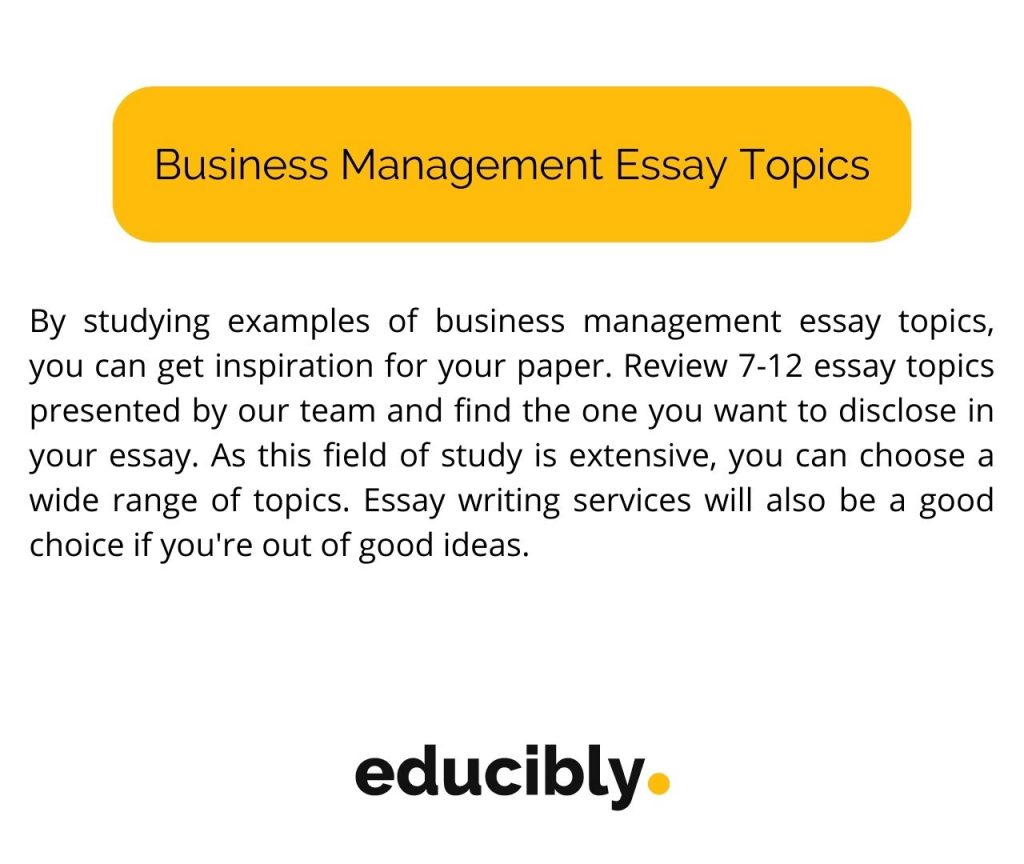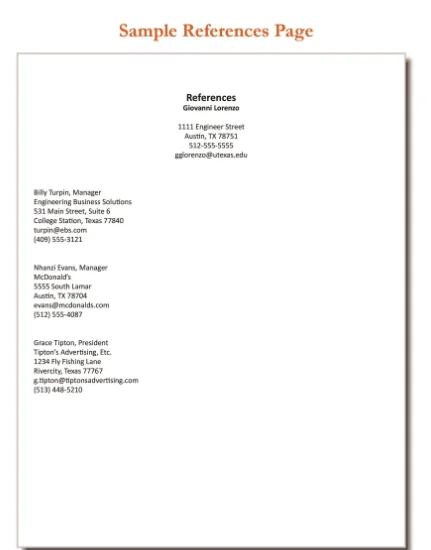How to Write a Business Essay for Impactful Communication and Analysis

So, you've got a business essay coming up, and you're feeling a mix of excitement and a tad bit overwhelmed, right? Totally get it. Writing a business essay might sound boring, but trust me, it's a skill that's gonna come in handy when you're out there in the real world.
In this article, we're dishing out some awesome tips just for you if you have question on how to start a business essay. Think of it as your secret weapon to tackle those business essays like a pro. We'll keep it real, easy, and super practical – no fancy jargon or complicated theories. Let's dive into the world of business essay writing, where your words can make a big impact. In case you lack time or motivation to finish your assignment, use our business essay writing service to streamline the process.

What Is a Business Essay
Business essays are written pieces that explore and analyze various aspects of business-related topics, often focusing on management, marketing, finance, or entrepreneurship. They provide a platform for students and professionals to articulate their understanding of business concepts, theories, and real-world applications. Typically written in a formal and structured manner, a business essay requires critical thinking, research skills, and the ability to communicate ideas effectively. Whether delving into case studies, discussing industry trends, or evaluating business strategies, the essay aims to provide insights, draw conclusions, and contribute to a deeper understanding of the dynamic world of business.
.webp)
How to Write an Introduction for a Business Essay
A business essay introduction sets the tone for the entire paper and captures the reader's attention. Here are some steps and tips to help you write an effective introduction for a business essay:
- Understand the Purpose of the Introduction
Clearly understand the purpose of your essay. Are you providing an overview of a business concept, analyzing a case study, or arguing a specific point? Tailor your introduction accordingly.
- Start with a Hook
Grab the reader's attention with a compelling hook. This could be a relevant quote, a surprising fact, a rhetorical question, or a thought-provoking statement. The goal is to make the reader want to continue reading.
- Provide Context
After the hook, provide some background or context related to the topic of your essay. Help the reader understand the significance and relevance of the subject matter in the business world.
- Thesis Statement
Clearly state your thesis or the main argument of your essay. This should be a concise and focused statement that outlines what the reader can expect from the rest of the essay. Make sure it is specific and reflects the purpose of your writing.
- Outline the Scope
Briefly outline the main points or areas that your essay will cover. This gives the reader a roadmap of what to expect and helps them understand the structure of your essay.
- Use Clear and Concise Language
Keep your introduction clear and concise. Avoid unnecessary jargon or complex language that might confuse the reader. Aim for clarity and precision.
- Be Relevant
Ensure that every sentence in your introduction is directly related to the topic of your essay. Avoid going off on tangents or providing excessive information that doesn't contribute to the main points.
- Consider the Tone
Choose a tone that is appropriate for your audience and the nature of your essay. Business essays can vary in tone, from formal and academic to more conversational, depending on the context.

Lorem ipsum dolor sit amet, consectetur adipiscing elit.

Wednesday Addams
Mysterious, dark, and sarcastic
You’re the master of dark humor and love standing out with your unconventional style. Your perfect costume? A modern twist on Wednesday Addams’ gothic look. You’ll own Halloween with your unapologetically eerie vibe. 🖤🕸️
Are You a Business Student with a Hectic Schedule?
Try our professional writing service – it can do wonders for your curriculum!
Business Essay Introduction Example
Here’s an example of an introduction for an essay titled “The Rise of E-commerce: Shaping the Future of Retail”:
The retail landscape is undergoing a seismic shift as e-commerce continues to redefine the way consumers shop. In this essay, we explore the profound implications of this digital transformation on traditional retail models and analyze the key strategies businesses are employing to thrive in this dynamic environment. From changing consumer behaviors to the strategic use of technology, the impact of e-commerce on the retail sector is undeniable, prompting businesses to adapt or face the risk of obsolescence.
How to Write a Business Essay
Working on a business essay might seem daunting, but it doesn't have to be. In this guide, we'll break down the process into simple steps to help you navigate through it smoothly. In this next section. We’ll be breaking down the essentials of drawing up a business essay from start to finish. From defining your main argument to structuring your points effectively, let's explore the key strategies that will set you on the path to success.
%20(2).webp)
Analyze the Prompt
Start by carefully reading and understanding the essay prompt. This involves breaking down the question to grasp what it's asking for, identifying the main topics, and recognizing any specific tasks or points to cover. This step helps you set the stage for a focused and relevant essay by ensuring you address all aspects mentioned in the prompt. You can hire a business essay writer to expedite the process if you want.
Think of a Thesis Statement
When writing a business essay, think of the thesis statement as the essay's compass. It should be a concise, strong sentence that lays out your main argument or viewpoint on the topic. Your thesis guides the entire essay, so make sure it's specific, debatable, and gives readers a clear idea of what to expect in your writing.
Create an Outline
We’ve already shared tips on how to write an introduction for a business essay, so let’s move on to the next stages. Organize your thoughts by outlining the main points and structure of your essay. This doesn't have to be too detailed; just a roadmap that helps you see how different ideas connect. An outline ensures a logical flow in your writing and prevents you from going off track. By the way, have you already picked business essay topics ? If not, here’s a list of great ideas you can use!
Provide Topic Background
Before diving into your main points, the business essay writing format implies giving your reader some context about the topic. Briefly introduce the key concepts, relevant facts, or historical background that will help readers understand the importance and relevance of your essay.
Write the Main Body
Start developing your essay by expanding on the main points outlined in your thesis. Each paragraph should focus on a specific idea or argument supported by evidence or examples. Be clear and concise, ensuring a smooth transition between paragraphs. It’s the most difficult part of the assignment, meaning you can use our college essay service to simplify it.
Write a Conclusion
Summarize your key points and conclusively restate your thesis. The conclusion should tie up the loose ends and leave a lasting impression on the reader. Avoid introducing new information but rather reinforce your main argument. For more details about how to write a conclusion for an essay , please refer to our guide.
Add a Bibliography
List all the sources you used in your research. Be meticulous about citing your references properly, following the chosen format (APA, MLA, etc.). This adds credibility to your essay and avoids plagiarism issues.
Edit and Proofread
As you’ve learned how to write a business essay, it’s time to master the art of self-revising. Review your essay for clarity, coherence, and grammatical errors. Editing ensures that your ideas flow smoothly, and proofreading catches any overlooked mistakes. It's a crucial step to polish your essay and present a professional piece of writing. Do you have another assignment on business management ? This guide will help you!
Choose the Writing Format
Reiterate the importance of selecting and adhering to the chosen writing format throughout the essay. Consistency in formatting, citations, and other style elements contributes to the overall professionalism of your work.
Business Essay Example
Business essay examples offer practical assistance to students tackling assignments by showcasing the application of essential writing principles in a real-world context. As a tangible reference, it demonstrates an effective essay structure and how to formulate a clear thesis statement and provide coherent arguments. By examining examples, students can glean insights into research techniques, proper citation practices, and overall essay organization, empowering them to approach their business assignments with increased confidence and proficiency.
Example 1: “The Impact of Technological Advancements on Modern Business Operations”
This essay explores the multifaceted impact of technology on operational efficiency, innovation, customer relations, and global connectivity. From integrating automation and artificial intelligence for streamlined processes to facilitating global expansion through digital platforms, technology emerges as a driving force shaping the success and sustainability of contemporary enterprises. While acknowledging the numerous benefits, the essay also highlights the challenges and ethical considerations inherent in adopting these technologies, emphasizing the need for businesses to navigate these complexities responsibly for long-term growth and competitiveness.
Example 2: “Sustainable Business Practices: A Strategic Imperative for Corporate Success”
This essay explores the pivotal role of sustainable business practices as a strategic imperative for corporate success in the contemporary entrepreneurship scene. Addressing environmental concerns, social consciousness, and economic viability, the essay delves into the multifaceted benefits of adopting sustainable approaches. It discusses how businesses can align profitability with responsible practices, emphasizing environmental stewardship, social impact, and community engagement. The essay underscores the importance of regulatory compliance and risk mitigation in business by examining the economic advantages and innovation opportunities arising from sustainable initiatives.
Final Considerations
Students engage in writing business essays to develop essential skills and knowledge crucial for success in the professional world. These essays serve as a platform for honing critical thinking, analytical, and communication skills, allowing students to articulate and analyze complex business concepts. Through the process of researching, organizing thoughts, and constructing coherent arguments, students gain a deeper understanding of business principles and practices. Business essays also cultivate the ability to synthesize information, evaluate various perspectives, and present well-reasoned conclusions. If you find with task troublesome, you can always tell us, ‘ write my research paper ,’ and one of our wordsmiths will fulfill the assignment quickly.
Writing Business Essays Doesn’t Work for You?
Here’s an alternative – an expert writer with relevant experience and proper skills.
How Many Paragraphs Does a Business Essay Have?
What is the most important part of a business essay, how do you start off a business essay.

Annie Lambert
specializes in creating authoritative content on marketing, business, and finance, with a versatile ability to handle any essay type and dissertations. With a Master’s degree in Business Administration and a passion for social issues, her writing not only educates but also inspires action. On EssayPro blog, Annie delivers detailed guides and thought-provoking discussions on pressing economic and social topics. When not writing, she’s a guest speaker at various business seminars.

is an expert in nursing and healthcare, with a strong background in history, law, and literature. Holding advanced degrees in nursing and public health, his analytical approach and comprehensive knowledge help students navigate complex topics. On EssayPro blog, Adam provides insightful articles on everything from historical analysis to the intricacies of healthcare policies. In his downtime, he enjoys historical documentaries and volunteering at local clinics.
.webp)

How to Start a Business Essay: Full Explanation with an Example

Starting a business is like setting off on a wild adventure. It's thrilling, full of ups and downs, and it's up to you where you want to go. But let's face it: it's also confusing! With so much to think about, it's easy to feel lost. That's where this essay comes in. We're here to break it all down for you, giving you the lowdown on turning your business dreams into a solid action plan. So, grab a cup of coffee and get ready to dive in!
What Is a Business Essay?
An essay on business is a written composition that explores various aspects of the business world, ranging from theoretical concepts to practical applications. Typically, it analyzes specific topics within the realm of business, such as management practices, marketing strategies, financial analysis, or entrepreneurship. Business essays often provide insights, arguments, and recommendations supported by research, data, and real-world examples. They aim to inform, persuade, or educate readers about key issues, trends, or challenges in the business environment, fostering a deeper understanding of the subject matter and stimulating critical thinking. Our business essay writing service supports such types of assignments, so if you need help – feel free to request a quote.
What Is a Startup Business Concept?
A startup business concept is essentially the seed from which an entire venture grows. The initial spark of inspiration sets the foundation for everything that follows. This concept typically arises from identifying a gap or inefficiency in the market or recognizing an unmet need or problem potential customers face. Entrepreneurs then conceptualize innovative solutions to address these challenges, whether a new product, service, or approach.
The concept defines the startup's unique value proposition, outlining what makes it stand out in a crowded marketplace. For example, a startup concept might involve developing a mobile app to streamline a tedious process, creating a sustainable alternative to an existing product, or offering a niche service tailored to a specific audience.
Once a startup concept is formulated, it undergoes refinement and validation through market research, feasibility studies, and prototyping. This stage involves gathering feedback from potential customers, testing assumptions, and assessing the concept's viability in the real world. Entrepreneurs analyze market trends, competitive landscape, and consumer preferences to fine-tune their concept and ensure it aligns with market demand.
Additionally, they evaluate the concept's scalability and potential for growth, considering factors such as market size, revenue potential, and scalability. Through this iterative process, the startup concept evolves into a robust business model that serves as the blueprint for the startup's operations, guiding decisions related to product development, marketing strategy, and resource allocation.

How to Start a Business Essay?
Starting a business involves several key steps. Firstly, it's essential to identify a viable business idea that aligns with your passion, expertise, and market demand. Research your target market, competitors, and industry trends to refine your concept. Once you have a solid idea, develop a comprehensive business plan outlining your goals, strategies, and financial projections. This plan will serve as a roadmap for your venture and help secure funding or investment.
Next, you'll need to choose a legal structure for your business, such as a sole proprietorship, partnership, corporation, or LLC. Register your business name and obtain any necessary licenses or permits. Set up your business finances, including opening a business bank account and obtaining any required insurance. Finally, develop a marketing strategy to promote your products or services and attract customers. Building a strong online presence, networking with other businesses, and utilizing social media can all be effective marketing tactics. With careful planning and execution, you'll be well on your way to launching a successful business. Now, let’s review a basic business essay outline:

Introduction
- Grab the reader's attention with an interesting fact, quote, or anecdote related to the topic.
- Provide context and background information on the topic.
- State the main argument or purpose of the essay.
Body Paragraphs
- Paragraph 1: Describe the current business landscape, including trends, challenges, and opportunities.
- Paragraph 2: Discuss the significance of developing a comprehensive business plan for startups and established businesses.
- Paragraph 3: Outline the essential components of a business plan, such as market analysis, competitive analysis, marketing strategy, operations plan, and financial projections.
- Paragraph 4: Explore different sources of funding available to entrepreneurs, including bootstrapping, loans, venture capital, and crowdfunding.
- Paragraph 5: Discuss effective marketing strategies for promoting products or services, building brand awareness, and attracting customers.
- Paragraph 6: Highlight the significance of delivering exceptional customer service and building strong relationships with customers.
- Paragraph 7: Emphasize the importance of adaptability and innovation in responding to market changes and staying competitive.
- Summarize the main argument or purpose of the essay.
- Review the main points discussed in the body paragraphs.
- Leave the reader with a thought-provoking idea, question, or call to action related to the topic.
Business Paper Format
The business essay format typically follows a structured outline, including the following sections:

- This page includes the paper's title, your name, the name of your institution (if applicable), and the date.
- A brief summary of the paper's main points, usually around 150-250 words, providing an overview of the topic, purpose, methodology (if applicable), and key findings or conclusions.
- This section introduces the paper's topic, provides background information, and states the purpose or objective of the study.
Literature Review
- A review of relevant literature and research on the topic, highlighting existing theories, studies, and findings related to your research question or problem statement.
Methodology
- If applicable, this section outlines the research methods and techniques used to collect and analyze data, including any tools, procedures, or sampling techniques.
- Presentation of the findings or results of your study, often including tables, charts, or graphs to illustrate data and statistics.
- Interpretation and analysis of the results, discussing their significance, implications, limitations, and relevance to the research question or problem statement.
- A summary of the paper's main findings and key points, restating the purpose and significance of the study, and offering recommendations for future research or practical applications.
- A list of sources cited in the paper, formatted according to a specific citation style (e.g., APA, MLA, Chicago).
- Optional supplementary materials include additional data tables, survey instruments, or detailed methodology descriptions.
How to Write an Introduction for a Business Essay?
Writing an introduction for a business essay requires capturing the reader's interest while setting the stage for the topic you'll be discussing. Here's a guide to crafting an effective introduction:
Start with a Hook
- Begin with an attention-grabbing opening sentence to pique the reader's curiosity.
- This could be a surprising fact, a compelling statistic, a thought-provoking question, or a relevant quote from a business leader or expert.
Provide Context
- After the hook, provide a brief overview of the topic you'll address in the essay.
- Give the reader some background information to understand the significance and relevance of the subject matter.
- Explain why the topic is important and matters in the business world.
State Your Thesis
- End the introduction with a clear and concise thesis statement that outlines your essay's main argument or purpose.
- This statement should provide a roadmap for what the reader can expect to learn or discover in the essay.
- Make sure your thesis is specific, debatable, and supported by evidence you'll present in the body paragraphs.
Transition to the Body
- Use the end of the introduction to transition smoothly into the essay's main body.
- Briefly preview the key points or arguments you'll discuss in the subsequent paragraphs to give the reader an idea of what's to come.
How to Write a Business Essay?
Let's kick things off with a solid step-by-step guide that sets the stage. We're about to dish out some awesome business essay writing tips to make your essay shine like a beacon in a sea of words. So, buckle up, grab your pen (or keyboard), and let's get started on crafting an introduction that'll hook your reader from the get-go!
Understand the Business Assignment
Take the time to carefully read and understand the assignment prompt or guidelines provided by your instructor. Pay attention to any specific requirements, such as the length of the essay, formatting style, or particular topics to address. If you have any questions or uncertainties about starting a business essay, don't hesitate to seek clarification from your instructor to ensure you're on the right track before you begin researching and writing.
Research and Gather Information
Start your research by consulting various credible sources relevant to your topic. Utilize academic journals, books, reputable websites, and industry reports to gather information and evidence to support your arguments. Take detailed notes while conducting your research, recording key ideas, quotes, statistics, and their corresponding sources. Keep track of your sources to facilitate proper citation later on. Consider how you will engage readers in the business essay introduction – an anecdote, interesting quote, or relevant statistics.
Outline Your Essay
Create an outline for your how to start a business essay to organize your thoughts and structure your essay. Begin by outlining the main sections of your essay, such as the introduction, body paragraphs, and conclusion. Within each section, outline the main points you want to cover and the supporting evidence you'll use to support your arguments. Consider the logical flow of information and how each section relates to the overall thesis of your essay. Your outline serves as a roadmap for writing your essay and helps maintain coherence and clarity.
Write the Essay
With your outline in hand, start drafting your essay. Begin with a strong introduction that provides context for your topic, grabs the reader's attention, and clearly states your thesis or main argument. In the body paragraphs, develop each main point outlined in your outline, providing evidence, examples, and analysis to support your arguments. Ensure you cite your sources accurately and consistently throughout the essay according to the chosen citation style. Conclude your essay by summarizing the main points discussed in the body paragraphs and reinforcing the significance of your thesis. Leave the reader with a memorable closing thought or call to action related to the topic.
Revise and Edit
After writing a business essay, take the time to revise and edit it thoroughly. Review your essay for clarity, coherence, and logical flow of ideas. Check for grammar, punctuation, spelling errors, and any inconsistencies or gaps in your argumentation. Consider your essay's overall structure and organization, making adjustments as needed to improve readability and coherence. Seek feedback from peers, tutors, or instructors to gain fresh perspectives and identify areas for improvement. Make revisions based on the feedback received, and refine your essay until you are satisfied with the final draft. Finally, proofread your essay one last time to ensure it meets all the requirements and is ready to be submitted.
Startup Business Ideas
- A meal prep delivery service.
- An online marketplace for handmade goods.
- Mobile car wash and detailing.
- Virtual tutoring platform.
- Dog walking app.
- Farm-to-table food delivery.
- Outdoor gear rental.
- Virtual event planning.
- Home repair matchmaking.
- Maternity wear rental.
- On-site beauty services.
- Freelance photography booking.
- DIY crafting workshops.
- Mobile bike repair.
- Sustainable flower delivery.
- Virtual fitness training.
- Plant-based meal kits.
- Urban parking rental.
- Houseplant subscription.
- Fresh produce delivery.
- Mobile car maintenance.
- Gift concierge service.
- Virtual cooking classes.
- Errand running assistance.
Business Essay Topics
- Social media marketing's impact on small businesses.
- Improving employee engagement strategies.
- E-commerce: Challenges and opportunities.
- Customer relationship management success.
- Sustainable business practices and benefits.
- The gig economy: Pros versus cons.
- Workplace diversity and inclusion.
- Technology's influence on operations.
- Managing remote teams effectively.
- Corporate social responsibility in ethics.
- Entrepreneurship: Challenges and successes.
- Globalization's impact on SMEs.
- Leadership in organizational change.
- Workplace wellness programs.
- Business ethics in the digital age.
- The power of branding: Identity creation.
- Crisis management strategies for resilience.
- Efficient and sustainable supply chain management.
- Future of work: Trends and implications.
- Business innovation: Creativity and adaptation.
- Financial management for small businesses.
- Data privacy and security.
- Effective time management strategies.
- Emotional intelligence in leadership.
- Company culture: Retention and satisfaction.
Do’s and Don’ts of Business Essay Writing
There are certain rules for writing a business essay that you must follow and particular don’t-do-this issues that you should avoid.
- Clearly understand the essay prompt and adhere to any guidelines provided.
- Conduct thorough research using credible sources to support your arguments.
- Create a well-organized outline to structure your essay effectively.
- Craft a strong introduction that grabs the reader's attention and states your thesis clearly.
- Provide evidence and examples to support your arguments, using proper citations.
- Maintain a formal and professional tone throughout the essay.
- Use clear and concise language, avoiding jargon or overly complex terminology.
- Proofread your essay carefully to eliminate errors in grammar, punctuation, and spelling.
- Conclude your essay by summarizing key points and restating your thesis.
Don'ts:
- Don't plagiarize or use someone else's work without proper attribution.
- Avoid going off-topic or including irrelevant information in your essay.
- Don't rely solely on personal opinion; support your arguments with evidence and analysis.
- Avoid using informal language or slang in your writing.
- Don't rush through the writing process; take the time to revise and edit your essay thoroughly.
- Avoid making unsupported claims or assertions without evidence to back them up.
- Don't forget to cite your sources properly according to the chosen citation style.
- Avoid overloading your essay with too much information; focus on quality over quantity.
- Don't neglect the importance of formatting and presentation; ensure your essay is well-structured and visually appealing.
Business Essay Example
Here’s an example of a business essay that will be an excellent source of inspiration and formatting hints. If you want a new paper of similar quality, feel free to leave a quote.
Business essays serve as invaluable learning tools for students, providing them with a platform to apply theoretical concepts to real-world scenarios and develop essential skills for success in the business world. Students hone their critical thinking, problem-solving, and communication abilities by learning how to set up an essay , research topics, analyze facts, and write eloquently about various business topics. Business essays also encourage students to stay updated on current trends and developments in the business landscape, fostering a deeper understanding of industry dynamics and challenges. Moreover, writing business essays cultivates students' ability to formulate well-reasoned arguments, articulate their ideas effectively, and present information in a structured and persuasive manner, all of which are crucial competencies in professional settings.
Frequently asked questions
How many paragraphs does a business essay have.
She was flawless! first time using a website like this, I've ordered article review and i totally adored it! grammar punctuation, content - everything was on point
This writer is my go to, because whenever I need someone who I can trust my task to - I hire Joy. She wrote almost every paper for me for the last 2 years
Term paper done up to a highest standard, no revisions, perfect communication. 10s across the board!!!!!!!
I send him instructions and that's it. my paper was done 10 hours later, no stupid questions, he nailed it.
Sometimes I wonder if Michael is secretly a professor because he literally knows everything. HE DID SO WELL THAT MY PROF SHOWED MY PAPER AS AN EXAMPLE. unbelievable, many thanks
.webp)
New posts to your inbox!
Stay in touch
Business Essay Examples

13 Business Essay Examples for Students
15 min read
Published on: May 1, 2023
Last updated on: Oct 28, 2024

Share this article
Are you struggling to figure out the structure, research, or data required to make your essay stand out? Or frustrated by the lack of inspiration and ideas for your essay?
But don't give up yet! We have a powerful solution that will make your essay writing a breeze. Our list of business essay examples is here to help!
We have compiled expertly written business essay examples that will illustrate how to write a striking business essay.
With our examples, you'll be able to see how to structure your essay and generate creative ideas for your topic. And our tips will help you make the most of these examples.
So, let's dive in and get ready to learn!
On This Page On This Page -->
What is a Business Essay?
A business essay is a type of academic writing that focuses on business-related topics and issues. These essays can cover a wide range of topics such as marketing, finance, management, entrepreneurship, and more.
The importance of business essay lies in presenting a well-researched and informed analysis. To do this effectively, writers need to conduct extensive research and analysis on the topic at hand.
Referring to examples of business essays can help you gain insight into the structure, tone, and content of a well-written essay.
Business Essay Examples For Students
Here is a list of business writing examples
Business Essay Examples Pdf
Business Essay Example Grade 10
Business Essay Example Grade 11
A Level Business Essay Examples
University Business Essay Examples
International Business Essay Examples
Short Essay About Business
College Essay About Starting A Business
Types of Business Essay with Examples
When it comes to business essay writing, there are several different types that you might encounter.
Here's a brief overview of each type, including their characteristics and an example of each.

Paper Due? Why Suffer? That's our Job!
Case Studies
A case study is an in-depth analysis of a specific business situation or problem. It involves extensive research and data analysis to provide recommendations.
Case studies often showcase the application of theory to real-world business scenarios.
Example:
Research Papers
Research papers involve a more academic approach to business writing. They typically require an extensive literature review, data analysis, and original research.
Business research papers aim to contribute new knowledge to the field of business. These often involve a hypothesis or research question.
Argumentative Essays
Argumentative business essays aim to persuade the reader to adopt a particular point of view or take a specific action. They present an argument and use evidence and logic to support their claims.
Argumentative essays can address various business topics such as management practices, ethical issues, or market trends.
White Papers
A white paper is a document that provides a detailed explanation of a particular issue or problem, often with recommendations or solutions.
White papers are typically used to educate stakeholders about a specific topic. These are often used in the business-to-business (B2B) context.
Comparative Essays
Comparative business essays compare and contrast two or more topics or ideas. They typically analyze the similarities and differences between the topics to evaluate their pros and cons.
Comparative essays can focus on various aspects such as products, companies, markets, or strategies.
How to Structure Your Business Essays
As you begin writing your business essay, it's important to structure it in a clear and organized way.
Here's a step-by-step guide with business essay samples to help you do just that:
Executive Summary
The executive summary is a brief overview of your entire essay. It should summarize your main points and highlight your recommendations.
This section should be written after completing the essay, as it gives a clear picture of what the essay covers.
Here is how you start a business essay sample:
Introduction
The introduction sets the stage for the rest of the essay. It should introduce the topic, provide background information, and explain the purpose of the essay.
Here is a business essay introduction example:
Industry Analysis
In this section, you'll conduct a thorough analysis of the industry in which the business operates. You should examine factors such as competition, market trends, and customer behavior.
Here is a sample industry analysis
Key Issues or Problems
This section should identify the main issues or problems faced by the business. You should provide evidence to support your claims and analyze the impact of these issues.
Here is an example paragraph:
Solutions or Recommendation
Here, you'll provide solutions or recommendations to address the issues identified in the previous section. Your solutions should be well-supported and feasible.
For instance:
Implementation Plan
For this part, you'll outline a plan for implementing the solutions or recommendations you've proposed. This is sort of a description of the business model you suggest.
This section should be detailed and include specific action steps.
For example:
Finally, in the conclusion , you'll wrap up your essay by summarizing your main points and reiterating your recommendations.
This section should be clear, concise, and impactful.
By following this structure, your business essay will be well-organized, coherent, and easy to follow for your readers.
Looking for inspiration? Our comprehensive list of business essay topics will spark new ideas for your writing.
Tips for Using Business Essay Examples Effectively
Now that you have quite a few business essay examples at hand, you should know how to use them effectively:
- Use them as a guide, not a template : While it's great to learn from examples, you should never copy them outright. Instead, use them as a starting point for your own research and writing.
- Analyze the strengths and weaknesses of the essay : Take note of what works well in the example essay, as well as any areas that could be improved. This will help you understand how to make your own essay even better.
- Use them to inform your own research and writing : Pay attention to the research methods, sources, and evidence used in the example essay. This can give you ideas for your own research and help you strengthen your arguments.
- Avoid plagiarism and ensure proper citation: Whenever you use ideas or information from an example, make sure to cite your sources. This will help you avoid plagiarism and maintain academic integrity.
You now have plenty of business essay examples on different topics to help you get started!
By following our tips and studying the sample essays, you can confidently write your own essays that are clear, concise, and impactful.
However, if you still find yourself struggling with your business essays, just reach out to our professional business essay writing service .
We have the best online essay writing service and are ready to provide you a high-quality business. Our writing service has subject specialist writers who can tackle any business essay topic.
So why wait? Contact us today and let our AI essay writer take your business essays to the next level!
Cathy A. (Literature)
For more than five years now, Cathy has been one of our most hardworking authors on the platform. With a Masters degree in mass communication, she knows the ins and outs of professional writing. Clients often leave her glowing reviews for being an amazing writer who takes her work very seriously.
Need Help With Your Essay?
Also get FREE title page, Turnitin report, unlimited revisions, and more!
OFF ON CUSTOM ESSAYS
Essay Services
- Argumentative Essay Service
- Descriptive Essay Service
- Persuasive Essay Service
- Narrative Essay Service
- Analytical Essay Service
- Expository Essay Service
- Comparison Essay Service
Writing Help
- Term Paper Writing Help
- Research Writing Help
- Thesis Help
- Dissertation Help
- Report Writing Help
- Speech Writing Help
- Assignment Help
Legal & Policies
- Privacy Policy
- Cookies Policy
- Terms of Use
- Refunds & Cancellations
- Our Writers
- Success Stories
- Our Guarantees
- Affiliate Program
- Referral Program
Disclaimer: All client orders are completed by our team of highly qualified human writers. The essays and papers provided by us are not to be used for submission but rather as learning models only.

- Essay Writing Guides
How to Write a Business Management Essay
Is writing an excellent business essay possible? Yes, if you know how to go about it. A perfect leadership vs management essay makes a huge difference in your future career. It lets you show mastery of the career field you wish to pursue. This post shares practical ideas for composing a business management paper. Read on to learn more.
Understand Your Prompt and Topic
Start by analyzing your paper’s prompt to understand it. Pay attention to the instructions to grasp what your tutor expects from you. This stage lets you follow your professor’s preferred format or writing style. You will also be better positioned to know your instructor’s scope for the essay about business management.
Choose a Topic for Your Business Management Essay
Select an appropriate title for your business school essay unless your lecturer gave you a topic. You must brainstorm a topic that enables you to write smoothly. The chosen topic should also be broad enough to cover all the critical issues and narrow enough to manage within your assigned word count. Ensure the topic is interesting to inspire your research and writing.
Research Your Topic
Research is critical to your business essay writing. It helps you gather all the necessary materials to include in your assignment. This stage lets you use credible sources to defend your thesis and give your paper academic credibility. You will also be better positioned to support all your arguments with facts.
You can research your paper using different online and offline sources. Here are some bulletproof suggestions for your consideration.
Class Materials
Class materials are valuable information sources for your business essay. You should sort all these materials in order. If you missed anything in class, ask your classmates to give their notes for your independent work.
Hardcover books are another source of valuable information for researching business essay topics. You can get them from your school or personal library. These publications from reputable experts in business will give sufficient support for your arguments.
Online Sources
You may also get invaluable data from online publications and academic platforms. Search the internet and compile a set of credible journals and articles as the evidence base for your assignment. You may download or bookmark these sources for easy use. Some options to use are:
- Relevant journals and studies.
- Publications from leading media houses.
- Essays from authoritative experts.
- News articles and press releases.
Outline Your Essay About Management
You should outline your paper after finishing your research. Follow your professor’s preferred business essay format. Outlining your paper correctly orders your assignment, such as a time management essay. An average business essay format looks as follows.
Introduction
This opening section serves these purposes:
- Quickly introduces your topic and its significance.
- Briefly discusses the dimensions of the topic you’re analyzing.
- Presents a clear thesis statement.
Body paragraphs
Your essay on business will usually have a body section with three to four paragraphs.
- A sentence paragraph that introduces the first argument.
- Supporting evidence for your first idea.
- A logical transition to the second point.
- A sentence paragraph that introduces the second argument.
- Supporting proof for the second point.
- A logical transition to the third idea.
- A topic sentence introducing the third argument.
- Supporting evidence for the third point.
- A logical transition to the fourth idea or conclusion
Argument 4 (optional)
- A topic sentence introducing the first idea.
- Supporting proof for the first point.
- A logical transition to the conclusion.
The conclusion serves these purposes.
- Quickly restates your main body paragraph ideas.
- Restates your thesis statement.
- It proves your thesis statement’s relevance in real-life business settings.
Read Business Essay Examples
Reading a business essay example boosts your writing skills and expands your academic horizons. This path is necessary if you don’t excel in writing yet. Thus, a well-selected sample shows you what an excellent management essay should entail, how a great author introduces and defends arguments, and how to use sources to back up your opinions and arguments.
Start Composing Your Essay On Leadership and Management
Now that you are sure of what you are doing, start your assignment. You should write the paper within your tutor’s given word count. Please don’t exceed the scope or write below it. Otherwise, you could lose good grades. When drafting, pay attention to the following details.
- Compose your paper formally using correct grammar and spelling.
- Don’t use slang.
- Don’t use short verb forms.
- Write with an authoritative voice.
- Present your arguments confidently.
- Provide facts or evidence for your arguments.
- Utilize proper paragraphing.
- Space your paper correctly.
- Use in-text citations when necessary.
- Create a bibliography for the sources you utilized.
Polish Your Essay on Business Management
Polish your assignment before handing it to your professor. Check it thoroughly by rereading the text two to three times. Give the paper to your trusted classmate to catch any errors you might have overlooked. Remember to check it for originality to avoid serious plagiarism problems.
Your refining process should also pay attention to the following issues:
- Check how your ideas flow.
- Ensure consistency in your arguments.
- Double-check that all your citations are present and correct.
- Make sure you adhere to the format and all the guidelines.
- Remove all fluff.
- Check whether the paper fits your assigned word count.
- Get Expert Assistance If Necessary
What if you don’t have the time or skills to write a business paper that fetches excellent grades? Don’t despair because you can hire a business essay writer. A professional will help you with your project management essay if you face difficulties or fear getting low grades. External help is also handy when you have pressing deadlines. It ensures you don’t lag behind your classmates.
Closing Remarks on Writing a Perfect Essay On Management
You are now abreast of everything you need to compose an excellent essay about business. Follow these guidelines to sharpen your writing skills. But should you need external help, our essay writing business is here on standby to assist you. Talk to us today.



How to Write a Business Essay: an Ultimate Guide

Table of Contents
Writing an essay can be boring. A lot of essays are basically the same thing over and over again. You write an introduction, then you write your supporting paragraphs, and then you create a conclusion. Overall, the process is not a lot of fun, and you can often feel as though you are simply going through the motions for the sake of churning out extra work. But since you have to write an essay, it’s worth considering the many ways that you can make the process faster and easier. In this ultimate guide, we’ll discuss the best way to write a business essay so you can get through the process faster and with relatively little trouble.

It might seem obvious, but the first thing you need to do when you write an essay is to read the essay question. You need to be sure you understand each part of the essay question and how the parts of the question work together. You would be surprised how many students only glance at the question and then write a paper that only partially addresses the assignment. You don’t want to lose points because part of your paper isn’t on topic. If you find any parts of the paper that you don’t understand or that require explanation, be sure to contact your instructor for clarification before you start writing.
Read the essay rubric
These days, most essays have a grading rubric included with the question. A grading rubric is like a cheat sheet for writing your essay. When you review the essay rubric, you’ll see exactly how your instructor will grade your paper and what your instructor will be looking for. When you write your paper, you will therefore know exactly what to include and how to write about it in order to maximize your points—and you’ll also see what you can spend less time on because it won’t contribute to your overall grade.
Make friends with your library
Many students automatically turn to search engines like Google in order to research their papers, but this is not the most effective way to find high-quality business sources for your paper. Instead, take advantage of your library’s databases. Your college or university library will likely have dedicated business databases that collect high-quality academic articles on business topics. Using these resources in your paper will make your essay stronger and more effective, and it will put your paper on a solid academic footing.
Compile your sources before you write
Many students use the start-and-stop method to write their papers, composing a sentence or two and then stopping to look up more information in order to keep going. This, however, is an inefficient way to work. A better way is to read through your research sources before you start and copy into a separate file a series of quotations and facts that you might use in your paper, creating in-text citations and reference list entries for each before you start. Doing so will make sure that you don’t have to stop for research and have a ready bank of pre-cited material to work with as you write.
Outline before you write
Outlining is an important skill that will both save you time and improve the quality of your essay. Take time before you write to lay out your paper from beginning to end. Start with your thesis statement and carefully lay out the body paragraphs with a topic sentence, supporting details (including research, quotes, and citations ), and a closing paragraph . Plan your transitions to link paragraphs together. Any amount of outlining can be helpful, but the more effort that you put into outlining at this stage, the easier it will be to write your paper, and the less likely it will be that you get stuck in a tangent that goes nowhere or meander into a point that requires you to change your thesis and revise you whole essay.
Remember to revise and proofread
When you finish the draft of your paper, you aren’t done yet. The first draft is rarely the finished product. You should always set aside time to read your work back and to make revisions to make it clearer. You also need to carefully proofread for mechanical grammar, punctuation, and syntax issues to ensure that your paper is as close to perfect as possible. You don’t want to leave points on the table because your paper had easy to fix minor spelling or grammar errors.
Consider professional writing help
Another great way to get your paper done quickly is to seek out custom professional help from an essay writing service with academic experts. An online writing company such as this can create business papers for college students and deliver them fast. When you utilize professional writing assistance, you can receive a custom-written essay that can serve as a great model to help you understand how a professional would approach your business topic and organize and develop an essay to address your assignment. Using a model such as this can save you time and effort as you work on your own paper, allowing you to focus on the learning process more than the mechanics of academic essay writing.
Join the thousands who have sharpened their business writing skills with our award winning courses.
Copyright © 2024 Businesswritingblog.com.
Business Essay and the Best Way of Its Writing
- Academic Writing Tips

- Social Science
- Political Science

Business is an essential aspect of today’s evolving world. It is a lucrative industry that impacts many sectors, including education. Business-related courses are popular as many students are pursuing the programs. There are many branches in the business field, from business management to finance. College tutors often give students different business papers to test their knowledge as part of the assessment.
A business essay is an academic assignment that involves writing a paper that responds with a strategic and analytical approach to specific situations occurring in the market. Each business essay has a different topic that students tackle. However, the primary purpose of such essays is to collect relevant facts that align with the research question and analyze the data to get solutions.
Writing a business essay might seem simple, but it requires impressive writing skills and extensive research. You must be familiar with the topic to know the paper’s direction. Topic selection is a tricky section that affects the entire writing process. It is essential to identify a relevant topic to assist you in crafting a remarkable paper. You have to write a well-structured and compelling paper to get good grades. Presenting accurate arguments with supporting examples from reliable sources is an essential research aspect. Thus, a business essay must follow the required academic standards and theoretical frameworks.
However, writing is not everyone’s cup of tea, and incorporating logical arguments can be challenging. If you are stuck, you can check any business essay example online to understand the format. You will know how to structure the paper and relate it to the relevant themes.
That is why our writing service is here to help needy students craft exceptional essays. We will connect with a proficient business essay writer to help with the research and writing process. Get flawless documents from us and earn the best score in your class.
Business Essay Format
Most learners often overlook the importance of having a business essay format. It is imperative to use a format to help you outline your work. Proper thought organization and articulation are essential aspects that translate into a well-written business essay.
Below is an example of the format:
- Introduction
- Background information
- Introduce main topics
- Thesis statement
- Topic sentence
- Research explanation
- Restate points
- Significance of the study
The above outline is a map that will guide you to know what to include in each section. In addition, you will understand what the assignment requires you to do from the introduction to the conclusion.
If you still find it challenging to get the proper format, you can study a relevant business essay example from our site and jumpstart your paper. Whether you need a business school essay or a business plan essay, we have you covered.
Write Business Essay In 5 Steps
While writing might seem challenging, with the proper format and topic familiarity, you are on the right track. It is imperative to understand the writing process before composing your business essay. You need to read the prompt carefully to know what you are supposed to research and write about.
Here is an overview of the writing process in 5 simple steps:
- Topic Selection
Choosing a good topic is mandatory in crafting an excellent paper. You must select a theme that aligns with the research question. Additionally, ensure you select a familiar topic you are passionate about to avoid writing mistakes and illogical paragraphs.
- Extensive Research
Conduct extensive research to get facts and supporting evidence. Narrow down your theme and include only good points. Avoid broad topics because you will waste time during research.
- Essay Outline
Make sure you use a proper outline to organize your thoughts and line of arguments. Follow the format essay
Start writing your paper while using the required academic format. Organize your work and include the introduction, main body paragraphs, or conclusion.
- Editing and Proofreading
Finally, edit and proofread your essay to eliminate grammatical and spelling mistakes.
The above steps will help you during business essay writing to craft remarkable papers. It would be best to plan your time adequately to avoid rushing through the process. However, you must select an appropriate topic for your paper. It could be a business management essay or a marketing paper. No matter the subject discipline, ensure you follow the correct procedure.
Business Essay Topics

Our experts have compiled a list of different business essay topics to inspire your writing:
- Discuss the importance of bookkeeping in a business.
- Evaluate the impact of value addition in products.
- An analysis of income and expenditure transactions.
- Analyze the supply-chain industry.
- The effects of product promotion in business growth.
- How to develop an effective marketing strategy.
- Impact of policymaking in enhancing company productivity.
- What is multilevel marketing?
- Impact of technology in the business world.
- Discuss the challenges affecting entrepreneurship.
- Significance of human resource management.
- Explore the importance of budget analysis.
- How does technology impact advertising?
- The importance of a financial strategy.
- How to start an online business.
- How can organizations profit from sustainable practices?
- How to develop a positive organizational culture.
- The importance of employee diversity in an organization.
- Effective ways of fraud prevention in a company.
- Explore the communication channels in an organization.
Let us look at interesting argumentative business essay topics
- Discuss the influence of cultural differences on international companies.
- A comprehensive analysis of cryptocurrencies.
- Discuss the ethical dilemmas in international organizations.
- The influence of globalization on the business community.
- Should large organizations have a social media presence?
- Causes and effects of economic recession.
- Impact of politics on business growth.
- Discuss the effective strategies of negotiating cross-cultural business deals.
- Explore the integrity of online entrepreneurship.
- The impact of corporate social responsibility in an organization.
The field is quite diverse with various course programs. You can derive different topics from these programs to get logical arguments. So, get inspiration from the compelling business school essay examples and craft exceptional papers.

How To Start A Business Essay
Knowing how to start a business essay is essential for academic writing. The first step entails topic selection because it will determine the essay’s direction. Identifying a relevant topic is vital, and you need to ensure you get the suitable theme. It will also help save you time during research and simplify the writing process.
When it comes to essay writing service , business papers are among the assignments that require extensive research and analysis. Read the essay prompt carefully to understand the tutor’s expectations. Then, make sure you conduct a comprehensive brainstorming session to get the major points for your paper. Having the right points will help you compose logical arguments in a flawless manner.
Moreover, it would help to read previous essays and publications from reliable essays widely. You will get essential data to support your arguments. Besides, the sources will help you cite your essay correctly.
Start your essay with an insightful introduction and include your perspective regarding the topic. Incorporate a powerful thesis statement that informs your readers of the paper’s direction and the major points you will discuss.
Proceed to write the body paragraphs with a topic sentence that captures all significant arguments. Each paragraph should have well-explained arguments that flow logically.
Finally, conclude your business essay by restating your main points and the significance of the study.
Still, need help with your paper? Worry no more. Our competent business essay writers are on standby, ready to assist you with any academic paper. Stop wasting time and reach out to us. We will help you score top-of-the-class grades within no time.
The paper “Enterprises Resource Planning Success and Failure” is an outstanding example of a business essay. An Enterprise resource planning (ERP) system according to Aslan et al. (2012, p.693) is a management system within an organization that has sets of connected inclusive software, which may be used when espoused and put into practice effectively, to oversee and connect every organizational function. Basically, ERP systems may be employed as a tool for helping to improve the supply chain network as well as the level of performance by helping in decreasing cycle times.
Besides that, ERP systems have been utilized routinely in capital-intensive industries like building, construction, manufacturing, as well as defence. Latterly, ERP systems have advanced further and nowadays they are prevalent in industries such as education, health care, finance, hospitality, and telecommunications. Fundamentally, the benefits of ERP systems are hard to realise not unless a strong disposition, as well as participation, is established within the organisation; so, the article seeks to critically analyse ERP success and failure experienced by organisations.
BodyAs mentioned by Hellens et al. (2005, p.283), ERP systems are built upon a single database and application, as well as a coordinate that is unified in the whole organization. For that reason, every application serving different departments such as HR, accounting, and supply chain are integrated firmly under a single ERP system. Al-as observed by Al-Masha et al. (2003, p.354), ERP systems are useful when successfully implemented because they accelerate the process of decision-making. So, the success of ERP systems depends on the ability of an organisation’s managers to efficiently oversee the operation of a business, given that ERP systems can help them reduces operation costs.
Success drivers of ERP systems can be categorised into two: operational and technological drivers. In this case, operational drivers are associated with ways of improving organisational performance, supporting business strategies, as well as cutting production costs. On the other hand, technological drivers are predominantly associated with compliance with existing rules and regulations. The notion of success varies as the process of implementation continues, in that for planning and implementation (the first two stages of the cycle) success is mainly rooted in completing the ERP project to the standards that are acceptable within the budget as well as a time limit.
As pointed out by Hanafizadeh et al. (2010), stabilization as well as Improvement (the last two stages of the cycle) success is founded on the seeming impact of the ERP system on the performance of the organization. As indicated in Hanafizadeh et al. (2010) study, there are scores of factors vital for the success of ERP systems; support is top management one of the factors, and it involves encouraging commitment, positivity, and support of top management in the ERP project. Another factor is the utilization of knowledge as well as experience of system and technology consultants.
Additionally, the balanced project team is crucial for the success of ERP systems because it includes the integration of employees and information technology with the broad knowledge of the processes in the organization. As evidenced in Hellens et al. (2005) study, the accuracy of the information is crucial to the success of ERP project, so, data loaded from accessible legacy systems must at all times be of high quality. ERP project cannot succeed if the project management teams do not have a well-defined, detailed project plan related to the goals of the project.
Change management is also a success factor in the implementation of ERP project; so, careful attention has to be offered to this, considering that several changes in business processes are experienced during ERP systems implementation. Training and education are also important given that technical expertise regarding the ERP system, its reference model, and facts regarding its working are useful in the process of implementation. Other factors crucial for success consists of, availability of experts who aside from being in top management will frequently help the organization realize ERP system benefits.
Failure of ERP projects has been prevalent, and this has continued to bite worldwide across all business platforms. As pointed out in Xue et al. (2005, p.279) study, ERP poise substantial benefits like improving customer service, reducing manufacturing costs and boosts productivity, but these benefits are only realised after successfully implementing the ERP systems. Nevertheless, statistics show that implementation of ERP systems is still a failure amongst scores of companies. Statistically, 90 per cent of ERP systems implementations in Asia countries, especially China are either completed late or use more money and resources than those stipulated in budget.
In Xue et al. (2005) study, where they differentiated implementation success of ERP system in China as well as western countries, they noted that China had a higher percentage of failure which was attributed mainly to lack of support from top management as well as data inaccuracy. Other factors that led to ERP failure include poor participation, education and training, insignificant time ensuing from a minimal understanding of cross-operational organisational processes (Dechow & Mouritsen, 2005, p.691). Furthermore, ERP systems are exceedingly expensive, and also the need for the organisation to hire consultants to assist in the configuration as well as implementation, results in further escalation of price; thus, creating a high possibility of failure.
The cost used on consultants is almost thrice the cost of an ERP system; this negatively affects the productivity of the company and can lead also to the failure of the ERP system. ConclusionIn conclusion, it has been argued that ERP systems are beneficial because they improve the flow of information between every function of the company and also manages the connections to external stakeholders. Currently, the key basis of competitive advantage is the capability of a business to improve the processes of the supply chain.
This necessity has created the need for more advanced information systems like ERP systems. The articles have heightened numerous factors critical to the success of ERP, and which have allowed companies to efficiently plan their resources resulting in business efficient functionality and increased productivity. Failures as discussed in the article are caused by lack of support from top management, data inaccuracy, and lack of sufficient education and training.
The paper “New iPhones Show a Hit For Apple as Quarterly Profit Fluctuate 13 Percent” is an outstanding example of a business literature review. Yao (2014) explains that China is expected to provide information about its weakest growth since the occurrence of the global financial crisis within the third quarter while the property downturn is assessed based on manufacturing and investment. As a result, more pressure has been put on Beijing to unveil new stimulus measures. According to Yao (2014), the market assumes that the Communist Party leader will be able to adjust to the gradual slowdown. This will happen only in circumstances where there are no possibilities of experiencing a potentially destabilizing fluctuation in unemployment. However, anything weaker would lead to more speculations of key stimulus measures, for instance, an interest rate cut. Although the leadership has consistently provided steady aid specifically to vulnerable sectors of the economy, it has been noted that several stimuli have been ignored because China is still struggling to pay a huge local government debt (Yao 2014).
Article 2: New iPhones show a hit for Apple as quarterly profit fluctuate 13 percent
Due to strong demand for APPLE’s new larger-screen iPhones released in September, its quarterly profit increased by 13 percent. This also enabled APPLE to overcome the sluggish iPad sales (Jones 2014). Despite the more intensifying competition felt by Samsung Electronics as APPLE’s leading Smartphone competitor, Jones (2014) points out that the iPhone is attracting more consumers who are also ready to pay high prices particularly for cutting-edge handsets. Through its latest phones, Apple is profitably catching with its major competitors, such as, Samsung that have from time to time managed to post attractive sales of larger phones. It has also been noted that the marketing strength that iPhone has gained stands in contrast to sluggish iPad sales and the issues affecting Samsung’s Smartphone business (Jones 2014).
Article 3: Coal not the solution for poverty
Couchi (2014) examines that cheap coal-fueled electricity is highly considered by miners and politicians as the best alternative way out of poverty, particularly for developing nations. However, Africa has not considered this. In the business report provided by Couchi (2014) about the U.S financial group Citi, it can be noted that the booming market for African electricity has been a result of the coal approach. In the attempt to reinforce coals bearish outlook, Couchi (2014) reports that Citi discovered that a new International Energy Agency (IEA) outlook on the commodity is in contrast with the idea of BHP, the US coal producer Peabody as well as the Minerals Council of Australia which maintains that coal would play an integral role in minimizing energy poverty, particularly for developing countries. Despite its metallurgical and thermal forms, coal is considered the second-biggest mineral exported from Australia after iron ore (Couchi 2014).
Article 4: Ebola could be in the headlines, but tobacco is yet another killer in Africa
Research conducted by The Guardian (2014) shows that although Ebola dominates the headlines, there is yet another killer pandemic of great importance that continues to kill many people in the African continent unnoticeably. It is has been noted that tobacco kills at least one between two long term smokers. Currently, it is anticipated to kill 1 billion people globally before 2100. This is relatively more compared to the current number of people who die of Ebola. The Guardian (2014) terms this global issue as injustice and inequality because Transnational Tobacco Companies (TTCs), such as UK-based British American Tobacco (BAT) earn humungous profits yet they cause economic damage worthy over half a trillion dollars each year. Besides, TTCs contribute more to environmental degradation and thus create risks that compromise the health as well as the sustainability of populations. To earn more profits, TTCs are currently shifting and expanding their business to untapped markets in regions with unrestricted opportunities for growth (The Guardian 2014).
Article 5: NAB, ANZ lead pack in building home-lending share
The home loan is still considered the major driving force in recovering credit growth for banks. In this case, National Australian Bank (NAB) and ANZ are on the frontline to encourage the big banks in taking the advantage of the mortgage market, while home and business lending are sustainably becoming strong. Therefore, NAB and ANZ have put on media their fastest growth out of the big in all the past three months (Yeates 2014). Despite the faster growth and expansion made by NAB compared to their rivals in home lending, Yeates (2014) notes that analysts see business lending as a bigger concern because the bank has lost shares and faced more pressure, particularly on its margins. Generally, the home loan market is considered a major driving force that enables banks to recover from credit growth regardless of the risks associated with life specifically in business lending (Yeates 2014).
The paper “Globalization and Culture” is an outstanding example of a business essay. Today, it is common to hear people refer to the world as ‘a global village’. This has been a result of the process of globalization. This process has opened up and improved trade across regional and national borders. Not only has globalization enhanced economic interactions across nations but also improved access to information and uplifted the fight for human rights, among other benefits. Recent technological and communication developments along with improved road networks have been the key drivers of globalization. However, critics of globalization say that these benefits have been realized at a very high price: that of surrendering regional and national cultural values, mainly, for Western morals (Kwame, 2007).
Regarding this debate, two key schools of thought emerge. From one angle critics argue that globalization spreads out any and every culture all over the realm, leading to cultural heterogeneity and deeper understanding between diverse groups. This is mainly defined through the global production and distribution of commodities such that people in different parts of the world have access to commodities they would otherwise have never seen. A case in point is the cultural interaction between the United States and Japan. Teens in the U.S interact with the Japanese culture through their comic books, animations and video games, while teens in Japan interact with the American culture through watching TV shows and Hollywood movies produced in the U.S (Kwame, 2007).
On the flip side, critics argue that globalization erodes the regional and national cultural identity through cultural homogeneity. This leads to a cohesive global culture constituting diluted varieties of regional and national cultural nuances. For instance, French pastries, ‘American’ fried chicken, and Japanese sushi can be eaten in almost any part of the world. Restraint chains such as MacDonald’s and Starbucks have influenced traditions and behaviors in different countries. Even though champions of globalization claim that this merely affects consumer goods and media broadcasting, critics contend that it deteriorates customary culture ((Kwame, 2007; Czinkota, 2003).
Culture is a prevalent aspect in business whether it is in marketing, production, or human resource management. It is a key variable in the function of success in new markets (Czinkota, 2003). People’s purchasing decisions are based on a product’s design, style or color that supports their religious beliefs and practices. Empirical evidence shows that the success or failure of a company, especially, in a foreign market is reliant upon the effective managerial exercise of local religious beliefs and practices. Therefore, managers ought to be on familiar terms with their market’s religious differences given that religion influences people’s attitudes. For instance, Asians have a different attitude toward authority and women that differs from Western beliefs and practices. Whereas many parts of the world, including Asia, South America, and Africa, value collectivism very much, Americans are more individualistic. Chinese, Latin Americans and Koreans take time casually even as Americans are more proactive.
Failing to appreciate the religious beliefs and practices of the market will often lead to lots of inadvertent mistakes, such as being socially violent, cultural mix-ups, tarnished interpersonal relations, poor negotiations. As a consequence, the company’s future performance dwindles as profits decline. Lack of religious competence, or religious dogmatism, can easily put at risk millions of dollars through fruitless negotiations, lost purchases or sales, and pitiable customer relationships (Czinkota, 2003).
Cultural Literacy
Culture is a broad system that includes traditions, beliefs, attitudes, values, institutions and social interactions. This system reflects the global crunch facing the human race, and so it is a cultural catastrophe (UNESCO 1997). Dealing with such a cultural diversity calls for an important skill referred to as cultural competence. Chrisman (2007) defines cultural competence as ‘attitudes, practice skills, and system savvy for cross-cultural conditions’. The key force in work involving cultural competence is the people’s flexibility and ability to appropriately consider and treat the general public politely and in a proper way fitting their culture. Cultural literacy takes account of cultural competence plus the capacity to analytically mirror, and if needed institute change in, one’s a specific culture. Cultural literacy also comprises the capacity to examine the actions of central cultures measured against other cultures. This becomes very much useful in business. A case in point is the understanding of the effect of globalization or cross-cultural businesses on indigenous cultures all over the world.
Cultural literacy has been likened to an iceberg, through the iceberg model of culture. This is due to the expanse contextual material one requires to understand the culture. Cultural literacy often involves much more than the information essentially spoken. In other words, to understand the meaning of a cultural term, one has got to have much information that is not revealed by the bare meaning of that term. The clear cultural meaning of the term is like the ‘tip of an iceberg’ meaning that the deeper understanding lies below the casual meaning of the term and it constitutes a person’s own applicable information. It is known that 15 per cent or less of an iceberg can be seen above the water surface, 85 per cent or more of the iceberg is submerged below the water surface. This means that there is quite a different picture depicted shallowly from that which is the actual translation in the literature, giving the imprint that implied information comprises relatively tiny bits and pieces of information, left out by the correspondent due to dismissal or suitability (Hawkes, 2001).
Figure 1: Iceberg Model of Culture
It has been stated earlier that culture is a broad system that among other aspects involves religion. The world is very diverse in terms of culture as well as religion. Each culture embodies a creation in itself and yet it is not closed. Cultures give religious convictions semantics, and religions provide decisive connotation to each culture. Religion is a way of life for numerous cultures saturating every one human action. In other cultures, it characterizes the utmost ambitions of human life, and for others, religion is an institution that claims to convey a meaning of deliverance (Hawkes, 2001).
The paper “The Different Communications ” is an outstanding example of a management assignment. Phone: 23 rd August: the communication was made to remind that the bill for the mobile phone is outstanding and if not paid within the date will have a fine imposed on it. The communication was successful as it helped to fulfill my need and acted as a reminder. Further, the call also ensured that it was complete and all the details like outstanding amount, due date, late fine, and other details were provided. The call was complete and highlighted the important aspect which if ignored could have an impact on my usage.
Radio: 24 th August: The communication was made regarding the areas which are having huge traffic and showed the roads which should be avoided. The communication was successful as it helped to fulfill my requirements by highlighting the different roads which need to be avoided and which need to be used. The communication was further clear and loud regarding the different roads and path which should be avoided. This method acted as one where proper guidance was provided and acting in the correct way was highlighted so those correct decisions can be taken.
Communications that were unsuccessful
Television: 24 th August: The communication was made regarding the sale of women’s garments. The communication was ineffective because in the first instance it didn’t meet my needs and requirements as I was not looking to shop. Secondly, the message was not constructed properly as it didn’t speak about the brands which were available on sale, the different garments which were available, and also didn’t highlight the date when the sale would end.
Phone: 25 th August: The communication was made regarding the mobile bill payment which has already been made. The call was ineffective because it was not required as the payment has been made and I had the required receipt. The call was instead a wastage of time. In addition to it, the call was not constructed properly and required to focus on areas through which a message would have been enough as a source of communication to ensure that the payment was correctly entered.
Reasons for communication not to be successful
The communication process can be improved in the following ways
Firstly, ensuring that the communication which is made is required and is addressed properly so that the person who receives the communication gains from it (Nicholas, 2013)
Secondly, providing complete information is essential as it will serve as a benchmark to evaluate the manner in which different information is passed (Anne & Bochner, 2007). It will also help to understand the important matter which has been spoken and will help to highlight the manner in which changes can make so that proper communication and message is passed
Thirdly, the targeted audience was wrong and it is important to correct the audience (Mehrabian and Susan, 2007). This will help to improve the validity and reliability of the communication and will ensure that the process of communication becomes effective and is directed towards the correct person
Fourthly, the process of communication needs to be improved and changed so that the message is correctly interpreted and passed with the same intention (Imahori & Lanigan, 2012). This will help the listeners to evaluate the message in the correct form and will help to ensure maximum response.
Fifthly, the media which are used needs to be chosen wisely as the usage of a message instead of a phone call for bill paid confirmation would have been more helpful and could have caught the attention of the audience in a better way. This would have multiplied the effectiveness of communication and would have helped to understand the important points and issues.
The process of communication thereby requires working on the smaller and important aspect so that the overall process of communication improves and helps to provide the required dimensions through which effectiveness can be gained in the manner messages are passed.
The paper “Why Did Telefonica Initially Focus on Latin America” is a perfect example of a business assignment. Based on Telefonica’s objectives of rapidly increasing shareholder value, profits and achieving growth, it had to take advantage of location economies. Hence, the company initially focused on Latin America, as it must have perceived FDI to be a means for circumnavigating trade barriers. Indeed, the reasons why Telefonica initially focused on Latin America are perceivable through the lens of the Uppsala Model Theory.
According to the theory, the internalisation of a company across many foreign markets is correlated to psychic distance, where the first entry is to foreign markets that are familiar and closer in regards to the psychic distance of the host country, before making subsequent entries in foreign markets with greater psychic distance. Psychic distance comprises the differences in culture, language and political systems (Falvo & Parshad 2005).
Within the perspective of Uppsala Model Theory, it should be argued that companies tend to gradually increase their activities in international markets through a series of incremental stages, where the succeeding steps are anchored in learning and adapting to foreign markets (Pandian & Sim 2002).
This implies that the firms fast gain experience from the markets, where they have closer cultural ties before expanding to foreign markets. For instance, Telefonica had to first gain experience as a telecoms operator in Latin America, since the region has deep cultural ties with Spain, where it is headquartered.
Strategic competitive advantages
The company’s decision to slowly expand to Europe appeared opportunistic as well as strategic. Europe had initially possessed trade barriers that lowered the chances of successful entries. Essentially, there is a correlation between culture and national competitive advantage, where countries that are likely to impose trade barriers, in terms of competition are bypassed in preference to those that are less competitive (Enu & Attah-Obeng 2010). This argument is based on Dunning’s Eclectic Theory, which hypothesises that a company will always seek to leverage their specific advantages, including marketing, knowledge, skilled personnel, technology and information (Dunning 2001).
In this case, the Latin American markets were growing rapidly. They also experienced an increased high adoption rate and usage of mobile phones and internet connections. Additionally, after the Spanish government privatised Telefonica and deregulated the Spanish telecommunications market, the company’s core objective became increasing shareholder value, profits and achieving growth.
This implies that profit maximisation is a major drive to foreign direct development; through the use of particular advantages the company has (Glesem et al. 1990). It, therefore, had to select a region that would enable it to achieve higher profits. The company selected Latin America over Europe. Latin America had few entry barriers, such as competition and government regulations, while Europe had greater barriers due to more competitors. This implies that imperfect competition within the marketplace is a key incentive for expanding abroad. Besides, European mobile telecommunications operators had agreed they would not invade each other’s markets. However, after the entry of America Movil into Latin America, Telefonica faced a stronger competitor, forcing it to expand to Europe.
Commenting on other student’s post:
Why did Telefonica initially focus on Latin America? Why was it slower to expand in Europe, even though Spain is a member of the European Union?
While the student hinted at the growth of multinational enterprises, a brief outline detailing why the company expanded and reasons for expansion could have provided a more relevant backdrop. Additionally, the reference to the Socialist Party by Popular Part in the general election of 1996 was irrelevant and out of context. The student’s decision to link the factors for the European Union to the opening of the telecommunications sector was misplaced. Rather, the student should have selected reasons why Telefonica selected to begin operating in Latin America before making headway to Europe. However, reference to high competition in the sector in Europe was justified.
Accordingly, the student should have explored the close cultural ties between Spain and Latin America, as the major drivers that triggered Telefonica to first launch in the region before expanding to Europe. In supporting the argument, a reference to a relevant theory, such as the Uppsala Model Theory could have pointed to the reasons why internationalisation of a company across many foreign markets is correlated to psychic distance (Uhasselt. be 2005). This includes why the initial entry is mostly made in foreign markets that are familiar and closer in regards to the psychic distance of the host country. Afterward, an explanation of what this meant to Telefonica based on the theory could have been appropriate (Gustafsson & Zasada 2011). For instance, the student should have stated that firms get to fast gain experience from the markets where they have closer cultural ties before expanding to foreign markets.
The student should have based his arguments on Dunning’s Eclectic Theory, which proposes that firms tend to use their peculiar advantages such as marketing, knowledge, skilled personnel, technology and information (Rugman 2010). Further, he should have stated that companies view FDI as a means to circumnavigate trade barriers before going forth to describe the correlation between culture and national competitive advantage, where countries that are likely to impose trade barriers in terms of competition are bypassed in preference to those that are less competitive.
While the student was also justified in arguing that the company sought to maximise profitability and to increase shareholder value, no basis was provided to support the argument, based on the case study. At this stage, the student should have suggested a theory to support his argument (Morgan & Katsikeas 1999). Later, the student should have provided examples from the case study to defend the choice of the theory he selected. However, the student provided examples outside the case study, such as “Telefonica has been able to establish footprints in 24 countries and having an average of 120,000 professionals with consolidated revenues of 24,957 million euros in January-June 2014 and more than 315.7 million customers at June 2014”
Additionally, the reasons the student outlined as the likely motivators for Telefonica to launch first in Latin America before making entries in Europe cannot be justified, as they have not been argued appropriately. For instance, in suggesting political developments, taking policy advantage and the fact that the markets shared a common language, the student should have discussed the concept of psychic distance and the related theory, such as the Uppsala Model Theory.
Business is an essential aspect of today’s evolving world. It is a lucrative industry that impacts many sectors, including education. Business-related courses are popular as many students are pursuing the… Read More

How to write an anthropology essay perfectly?
Stuck with an anthropology essay with no help in sight? Anthropology essay writing is not a simple task. Not many college students can handle such a paper. An anthropology essay… Read More
- Essay Tips&Tricks

All About Persuasive Essay Writing
Writing a persuasive essay requires expressing your viewpoint and convincing readers of its rightfulness. Many struggle with completing this type of written assignment because of a lack of proper writing… Read More
- Essay Writing Guides

Table of contents
- Have your assignments done by seasoned writers. We work 24/7. Just email us at:
- [email protected]

Business Essay Format: 5 steps How to write a Business Essay

How to Write a Business Essay
Writing a business essay requires a structured approach to address complex topics effectively. This guide will outline the five essential steps to craft a successful business essay.
We will provide you with a comprehensive roadmap to ensure your essay is well-researched, logically organized, and persuasively written.
As you follow these steps, you will be equipped to confidently tackle business essays, presenting your ideas clearly and concisely to engage and inform your readers effectively.

What is a Business Essay?
A business essay is a written academic or professional composition that explores and analyzes various aspects of the business world.

It serves as a platform for individuals, whether students or professionals, to express their insights, perspectives, and findings on business-related topics.
Business essays cover various subjects, including management, marketing, finance, entrepreneurship, economics, etc.
These essays aim to inform, persuade, or argue by presenting well-researched information, data, and evidence in a structured and coherent manner.
They often require critical thinking, analysis, and the application of relevant theories and concepts to real-world business scenarios.
Depending on the specific assignment or purpose, business essays may be reports, case studies, argumentative essays, or research papers.
Whether addressing issues in corporate strategy, market trends, ethical dilemmas, or financial analysis, business essays provide a valuable platform for individuals to engage with and contribute to the ever-evolving business world.
How to Format a Business Essay
Formatting a business essay is essential to presenting your ideas logically and professionally.
Proper formatting enhances readability, organizes thoughts, and adheres to academic or professional standards. Here are the critical steps to formatting a business essay effectively:
1. Title Page
Begin with a title page that includes the essay’s title, your name, the course name, the instructor’s name, and the submission date. Follow any specific formatting guidelines provided by your institution.
2. Introduction
Start with a clear and concise introduction that presents the essay’s topic and purpose. Provide background information and context to orient readers. Include a thesis statement that outlines the central argument or research question.
3. Body Paragraphs
Organize your essay into well-structured paragraphs, each addressing a single point or aspect of your argument. Begin each paragraph with a topic sentence that introduces the main idea.
Support your arguments with evidence, data, examples, and citations from credible sources.
Ensure a logical flow by using transitional phrases and explicit connections between paragraphs.
4. Headings and Subheadings
Use headings and subheadings to break down the content into sections. This aids in clarity and helps readers navigate your essay. Follow a consistent formatting style (e.g., APA, MLA, and Chicago) for headings.
5. Citations and References
Properly cite all sources used in your essay. Follow a specific citation style (e.g., APA, MLA, or Harvard) as required. Create a reference or bibliography page that lists all the sources you cited in the appropriate format.
6. Charts, Graphs, and Tables
If you include visual aids like charts, graphs, or tables, ensure they are labeled, numbered, and referred to in the text. Explain the significance of these visuals in the body of your essay.
7. Conclusion
Summarize the key points made in your essay without introducing new information.
Reiterate the thesis statement and the main arguments. Offer insights, implications, or recommendations based on your analysis.
8. References Page

List all the sources you cited in your essay in a separate references page. Format the references according to the chosen citation style.
9. Formatting Style
Adhere to the formatting style specified by your instructor or publication guidelines (e.g., APA, MLA, Chicago).
Attention to font size, margins, line spacing, and page numbering.
10. Proofreading and Editing
Carefully proofread and edit your essay for grammar, spelling, punctuation, and clarity.
Check for consistency in formatting, citation style, and headings.
Appendices (if necessary): Include appendices for supplementary material that don’t fit within the main body of the essay, such as detailed data, calculations, or additional information.
Word Count: Keep your essay within the specified word count limit. Avoid unnecessary repetition or verbosity.
11. Title and Page Numbers
Provide a descriptive title for your essay. Include page numbers, typically in the header or footer, for easy reference.
By following these steps and adhering to the required formatting style, you can create a well-organized and professionally presented business essay that effectively communicates your ideas and analysis to your intended audience.
5 Steps to Write a Good Business Essay
Writing a sound business essay requires careful planning, research, and organization. Whether you’re a student or a professional writer or even an MBA writer , these five steps will guide you in crafting an effective and persuasive business essay:
Understanding the Assignment
Understanding the assignment is the foundational step in writing a successful business essay. To begin, carefully read and dissect the assignment prompt or guidelines your instructor or organization provided.
Pay close attention to the specific requirements, such as the essay’s purpose, scope, and any formatting styles or citation guidelines that must be followed.
Next, identify key elements within the assignment, including the main topic or subject matter, the intended audience, and the expected outcome or goal of the essay. This step is crucial because it sets the direction for your research and writing process.
If you have any uncertainties or require clarification, don’t hesitate to seek guidance from your instructor.
When you understand the assignment clearly, you can tailor your research, structure, and content to meet the defined objectives, ensuring that your business essay addresses the specific requirements and resonates effectively with your target audience.
Research and Gathering Information
Once you’ve grasped the assignment’s requirements, the next critical step in crafting a compelling business essay is conducting thorough research and gathering information.

Again, this phase is the backbone of your paper, as it forms the basis for your arguments, insights, and analysis.
Start by exploring a variety of reputable sources, such as academic databases, books, scholarly journals, reports, and credible websites related to your chosen business topic.
Take meticulous notes, capturing essential data, key concepts, relevant quotes, and the sources’ publication details.
During the research process, maintain a critical eye, assessing the quality and reliability of the information you encounter—cross-reference information from multiple sources to ensure accuracy and objectivity.
Keep a detailed record of your sources; you’ll need this information for citations and references later.
Comprehensive research provides the insights and evidence necessary to support your arguments effectively, making your business essay well-informed and persuasive.
Planning and Outlining
Planning and outlining are pivotal in creating a well-structured and coherent business essay. Once you’ve gathered your research materials, it’s time to organize your thoughts and ideas systematically.
Begin by developing a clear and logical outline for your essay. This outline serves as a roadmap that guides your writing process and ensures that your essay flows smoothly. It typically consists of:
- Introduction: Outline the purpose and context of your essay, and include your thesis statement—a concise summary of your main argument or research question.
- Body Paragraphs: Break down your essay into multiple body paragraphs, each focusing on your argument’s critical point or aspect. Ensure logical order and precise transitions between paragraphs.
- Supporting Details: Under each body paragraph, outline the supporting evidence, data, or examples you will use to substantiate your argument.
- Conclusion: Summarize the main points of your essay and restate your thesis, offering insights or recommendations based on your analysis.
A well-structured outline helps you maintain focus, prevent redundancy, and organize your essay cohesively. It serves as a solid foundation for building a compelling and logically flowing business essay.
Writing the Essay
Begin with a captivating introduction that provides context and introduces the essay’s topic. Include a thesis statement that outlines your main argument or research question.
Each body paragraph should focus on your argument’s single point or aspect. Start with a clear topic sentence that introduces the paragraph’s main idea.
Provide evidence, examples, and data to support your argument. Cite your sources correctly. Use transitional phrases to maintain coherence and connect ideas between paragraphs.
Summarize the main points made in the essay without introducing new information. Restate the thesis statement and highlight the significance of your findings. Offer insights, implications, or recommendations based on your analysis.
Editing and Proofreading

Editing and proofreading are indispensable final steps in crafting a polished and effective business essay. After you’ve written your initial draft, reviewing and refining your work for clarity, correctness, and coherence is crucial.
Start by revisiting your essay’s overall structure and organization. Ensure that your ideas flow logically from one paragraph to the next and that your arguments are well-supported with evidence.
Check for grammar, spelling, and punctuation errors, and make necessary corrections.
Pay close attention to the consistency of your writing style, formatting, and citation throughout the essay, adhering to the specific guidelines provided by your institution or instructor.
Proofreading should involve a meticulous examination of your work, preferably after taking a break to gain a fresh perspective. You may feel inadequate to work on your work, you may consider a qualified MBA editor or a general essay editor to assist you.
Additionally, seek feedback from peers or mentors to gain valuable insights and suggestions for improvement.
A well-edited, error-free business essay demonstrates professionalism and enhances your credibility as a writer and researcher.

Josh Jasen or JJ as we fondly call him, is a senior academic editor at Grade Bees in charge of the writing department. When not managing complex essays and academic writing tasks, Josh is busy advising students on how to pass assignments. In his spare time, he loves playing football or walking with his dog around the park.
Related posts

Tips to Write Faster & Pass Timed Essays
How to Write Essays Faster in Exams: Tips to Pass Timed Essays

How to Write an English 102 Research Paper that Rocks

writing ancient history essay
Guide how to Write Good Ancient History Essays
How to Write a Business Essay

Table of Contents
What is a Business Essay?
A business essay is a written analysis or interpretation of a particular business-related question or problem. Its main purpose is to present a compelling argument, supported by evidence, to persuade or inform its readers about a specific aspect of business, whether it be management, marketing, finance, ethics, or any other business-related topic.
Overview of Different Types of Business Essays:
- Analytical Essays : These essays dissect a business scenario or problem, analyze the components, and present the findings in a structured manner.
- Persuasive Essays : Aimed at convincing the reader about a particular point of view or business strategy. These require strong arguments and supporting evidence.
- Case Studies : These essays involve a detailed examination of a particular company or event. The writer explores the subject’s background, present conditions, and potential future implications.
- Comparative Essays : These contrast two or more items, such as different leadership styles, market strategies, or economic theories, to understand their distinctions and implications.
- Problem-Solution Essays : Identify a problem within a business context and propose a feasible solution, backing it up with factual evidence and analysis.
Understanding the Assignment:
Tips for comprehending essay prompts and instructions:.
- Read Carefully : Take time to read through the essay prompt several times to understand precisely what is being asked.
- Highlight Keywords : Identify action words such as “analyze”, “compare”, “critique”, or “discuss” to grasp the type of response required.
- Clarify Doubts : If anything is unclear, do not hesitate to seek clarification from the instructor or peers.
Importance of Identifying the Essay’s Objectives and Audience:
- Objectives : Understanding the purpose of your essay is crucial. Is it to inform, persuade, or analyze a business concept or strategy? Knowing this guides your research and writing process.
- Audience : Knowing who will read your essay (e.g., academics, business professionals, peers) helps tailor the language, complexity, and tone of the content to suit their level of understanding and interest.
Research and Analysis:
How to conduct thorough research using credible sources:.
- Library and Online Databases : Utilize academic libraries and online databases for reputable sources such as journals, books, and authoritative articles.
- Government and Industry Reports : These can provide reliable statistics and insights.
- Case Studies and Company Records : Great for specific insights and real-world evidence.
Methods for Analyzing Information Relevant to the Essay Topic:
- Create an Outline : This helps organize thoughts and data logically.
- SWOT Analysis : Evaluate strengths, weaknesses, opportunities, and threats related to the essay topic.
- Comparative Analysis : If applicable, compare different theories, case studies, or data sets to draw informed conclusions.
- Critical Thinking : Challenge assumptions and explore alternative viewpoints. This deepens the analysis and strengthens arguments.
In the following sections, we will delve deeper into how to structure your essay effectively, develop a robust argument, and polish your work through careful editing and proofreading.
Planning and Outline:
Creating a robust business essay outline:.
A well-structured outline serves as the backbone of your essay. It can be detailed or brief, but it should clearly map out the introduction, body paragraphs, and conclusion.
- Thematic Organization : Group your research findings into themes or categories that will become the basis for your paragraphs or sections.
- Sequential Flow : Ensure that there is a logical progression of ideas from one paragraph to the next.
- Balance : Allocate a proportional amount of content for each section according to its importance in supporting your thesis.
Strategies for Organizing Thoughts and Research Findings:
- Mind Mapping : Use this to visually organize your thoughts around the central topic.
- Bullet Lists : Make simple bullet lists to arrange facts and arguments in order of impact or relevance.
- Post-it Notes : These can be rearranged easily to help you decide on the best structure for your essay.
Writing the Business Essay Introduction:
Crafting a compelling opening statement:.
- Hook : Begin with a strong hook that captures the reader’s attention, such as a striking statistic, a rhetorical question, or a relevant anecdote.
- Relevance : Briefly relate the opening to the wider business context to show the significance of your essay topic.
Establishing Context and Stating the Thesis:
- Background Information : Provide a concise overview of the topic’s background necessary for understanding the ensuing discussion.
- Thesis Statement : Clearly articulate your thesis, presenting your central argument or stance, which the rest of your essay will support.
Body Paragraphs:
Structuring arguments logically:.
- Topic Sentences : Start each paragraph with a topic sentence that presents the main idea of the paragraph.
- Coherence : Make sure that each sentence flows logically from one to the next, maintaining coherence within and between paragraphs.
Use of Evidence and Examples to Support Points:
- Credible Evidence : Support your arguments with data and evidence from credible sources.
- Real-World Examples : Incorporate examples from actual business practices to illustrate your points more vividly.
- Explanation : Don’t just present evidence, but also explain how it supports your argument or relates to your thesis.
Concluding the Business Essay:
Techniques for summarizing the main points effectively:.
- Restate the Thesis : Reinforce the thesis statement, putting it in the context of the provided evidence and arguments.
- Summarize Key Arguments : Recap the key points made in the body, highlighting how they collectively support your thesis.
Discussing Implications, Recommendations, or a Call to Action:
- Implications : Discuss the broader implications of your findings or argument for the business world or a specific sector.
- Recommendations : If appropriate, offer well-grounded recommendations for action or further investigation.
- Final Thought : Leave the reader with a provocative final thought or question to underscore the essay’s significance and encourage further reflection.
The conclusion of your essay is not merely an endpoint but a decisive component that ties together your analysis, reinforcing the significance of your argument and its implications in the business field.
Referencing and Citation:
Guide to proper referencing styles commonly used in business essays:.
- APA (American Psychological Association) : Often used for business, psychology, and social sciences, it focuses on the author-date method of in-text citation.
- Harvard : A common author-date reference style where the citations are parenthetical, with a reference list at the end.
- Chicago : Known for its footnote or endnote style, but also has an author-date system; prevalent in history and some business publications.
- MLA (Modern Language Association) : Utilizes parenthetical citation; less common in strict business fields but sometimes used in business humanities.
To correctly format citations and references, refer to the specific style guide or use citation tools like Zotero, EndNote, or Mendeley.
Importance of Avoiding Plagiarism:
- Ethical Writing : Presenting others’ words or ideas as your own is unethical and can lead to severe academic and professional consequences.
- Originality : Original work is valued and demonstrates your own understanding and analysis of the topic.
- Credibility : Proper citation builds credibility and allows readers to verify sources, fostering trust in your analysis.
Editing and Proofreading the Business Essay:
Best practices for revising the essay:.
- Multiple Rounds : Go through several rounds of editing, focusing on different aspects each time—structure, argument flow, evidence, and then language.
- Peer Review : If possible, have a peer review your essay for fresh perspectives on content and clarity.
- Distanced Review : After writing, take a break before editing to review your work with fresh eyes.
Grammar, Punctuation, and Style Considerations:
- Consistency : Ensure consistent use of tense, voice, and person throughout your essay.
- Clarity and Brevity : Use clear and concise language; avoid jargon unless your audience is familiar with it.
- Punctuation and Grammar : Use tools like Grammarly or Hemingway Editor to catch common mistakes, or consult grammar guides for complex issues.
Business Essay Writing Tips:
- Understand the Business Lingo : Familiarize yourself with business terminology to make your essay more authoritative.
- Active Voice : Prefer active voice over passive for clarity and dynamism.
- Real-Life Application : Always consider how theoretical concepts apply in real-world business scenarios for more impactful writing.
- Critical Analysis : Go beyond describing concepts; analyze and critique them to add depth to your essay.
- Stay Updated : Use current examples and case studies, as the business world is continually evolving.
Additional Resources:
- Books : “The Elements of Style” by Strunk and White for style, “On Writing Well” by William Zinsser for nonfiction writing.
- Online Guides : Purdue OWL for comprehensive writing resources, Harvard Business Review for real-world business insights.
- Tools : Google Scholar for research, Grammarly for grammar checks, Turnitin for plagiarism detection.
- Databases : Business Source Complete, JSTOR, and SSRN for scholarly articles and publications.


IMAGES
COMMENTS
Provide Context. After the hook, provide some background or context related to the topic of your essay. Help the reader understand the significance and relevance of the subject matter in the business world. Thesis Statement. Clearly state your thesis or the main argument of your essay.
Conduct thorough research using credible sources to support your arguments. Create a well-organized outline to structure your essay effectively. Craft a strong introduction that grabs the reader's attention and states your thesis clearly. Provide evidence and examples to support your arguments, using proper citations.
Identify exactly what the essay question/title is asking you to address. Examine the precise wording to work out the approach you’ll need to take. Keywords that appear frequently in business essay questions include: ‘analyse’, ‘discuss’, ‘illustrate’, ‘compare’, ‘describe’, ‘criticise’, ‘interpret’, ‘review ...
Here is how you start a business essay sample: This essay provides an in-depth analysis of the marketing strategies employed by Coca-Cola and PepsiCo. The essay highlights the similarities and differences between the two companies' approaches to product development, distribution, and advertising.
Start by analyzing your paper’s prompt to understand it. Pay attention to the instructions to grasp what your tutor expects from you. This stage lets you follow your professor’s preferred format or writing style. You will also be better positioned to know your instructor’s scope for the essay about business management.
Take time before you write to lay out your paper from beginning to end. Start with your thesis statement and carefully lay out the body paragraphs with a topic sentence, supporting details (including research, quotes, and citations), and a closing paragraph. Plan your transitions to link paragraphs together.
Business Essay Topics. Our experts have compiled a list of different business essay topics to inspire your writing: Discuss the importance of bookkeeping in a business. Evaluate the impact of value addition in products. An analysis of income and expenditure transactions. Analyze the supply-chain industry.
Here are the critical steps to formatting a business essay effectively: 1. Title Page. Begin with a title page that includes the essay’s title, your name, the course name, the instructor’s name, and the submission date. Follow any specific formatting guidelines provided by your institution. 2.
A business essay is a written analysis or interpretation of a particular business-related question or problem. Its main purpose is to present a compelling argument, supported by evidence, to persuade or inform its readers about a specific aspect of business, whether it be management, marketing, finance, ethics, or any other business-related topic.
Before you begin writing a business essay, you should make sure that you’ve thoroughly researched your chosen topic. During this stage, you should consult a variety of different sources to make sure you have a well-rounded view. Draft an outline of your paper. Plan out what the rest of your paper will look like.